
In 1911, hockey was the fastest growing sport in Canada, and its popularity had spread from coast to coast like wild fire. With demand for top quality hockey reaching a zenith in more regions than just the East, money was there to be made in spades for savvy entrepreneurs with dreams of a bigger and better hockey world.
As it always has been, to make money, one often has to put it forth first, and the Pacific Coast Hockey Association began a bidding war with the NHA for the services of its better players.
The PCHA was founded by the Patrick brothers, Frank and Lester, who had left the Renfrew hockey club after the 1910-11 season. After selling off their interests in a very profitable lumber company, they set their sights on making their mark in the business of hockey in the Vancouver area, where an appetite for the sport was widely evident.
It is impossible to account for all of what the Patricks did for the game of hockey in one paragraph. In short order, they created a new league that would compete against the NHA, built arenas with artificial ice, structured a league's rules and teams, managed, coached, operated, and played for the franchises they were financing. Along the way, they reinvented the game of hockey as it is known today - 22 rule changes brought in by the brothers are still in existance - and changed the face of the game forever.
The pioneer Patrick's zest affected the NHA immediatly. They lured 11 star players from the NHA to the PCHA and gave them more lucrative deals. The players they took in comprised almost half of the new leagues three teams.
The Patricks went after some of the best, and the Canadiens lost its star Newsy Lalonde and forward Georges Poulin. The Wanderers for their part went without Jimmy Gardner and Ottawa lost Cyclone Taylor.
The NHA was being watered down, and the Renfrew franchise did not survive. It would proceed as a four team league for 1911-12 with the Creamery Kings players being spread across the remaining clubs.
While Lalonde would go on to win the PCHA scoring race with 27 goals in 15 games, his absence hit the Canadiens hard, and despite the continued excellence of goalie George Vezina, they headed back down to a last place finish - just a pair of wins away from the first place, and Stanley Cup winning Quebec Bulldogs. With the schedule upped to 18 games from 16 the season before, the Habs goal total would drop from 66 to 59. Didier Pitre would account for almost half that sum himself.
 Transition was again the name of the game for the Canadiens, as manager Jack Laviolette reappointed himself coach in Lalonde's leave. After coach Adolphe Lecours' demands for more money left him twisting in the wind, one of the team's co-owners, Napoleon Dorval, assumed duties behind the bench.
Transition was again the name of the game for the Canadiens, as manager Jack Laviolette reappointed himself coach in Lalonde's leave. After coach Adolphe Lecours' demands for more money left him twisting in the wind, one of the team's co-owners, Napoleon Dorval, assumed duties behind the bench.Six Canadiens players from 1910-11 remained after the departures of Lalonde and Poulin. Returning for duty with the Habs were Vezina, Pitre, and Laviolette, who composed the core of the team, as well as Eugène Payan, Évariste Payer, and Hector Dallaire. Replacing Art Bernier, Lorenzo Bertrand and James Power were Ernie Dubeau, Frank Glass, Edgar Leduc, Alphonse Jetté, Louis Berlinguette, and Pierre Vezina.
When it came to facing the Canadiens, Didier Pitre was now the man to stop. Since being converted from a defenseman to playing the rover position, his devastating shot began to terrorize opposition goaltenders. Percy Lesueur of the Senators, fearfull of the rising shots, asked permission of the NHA to begin wearing a mask to protect himself. Wanderers goalie Riley Hern, a four time Cup champion in the early 1900's, quit from fear of being dinged by one of Pitre's blasts. It was a common sight at games, when Pitre wound up, to see fans jumping behind seats to protect themselves.
It was at this time that the Montreal Canadiens were beginning to be referred to as "the Flying Frenchmen" in the other cities in which they played. Laviolette had a certain knack for finding and signing players, such as Lalonde and Pitre, that could termed electrifying for their time. Through word of mouth, an inherant curiosity developed from the mystique of the language and seeing them perform their fast paced style of hockey.
Perhaps it was because the Canadiens played a wide open style of hockey, that word would spread in other cities that "the Flying Frenchmen" were in town. History has traced the term back to a journalist in Ottawa after a Habs win in January of 1911, but others credit an American scribe for coining the term at a later date. One thing is for sure, the Ottawa writers were quite impressed by the team that was literally "flying on the ice" that night, and the term has stuck with the team throughout the decades.

Upon its formation in December of 1909, the Canadiens were created with the Wanderers rivalry in mind. In doing so, the NHA understood that in order to make the rivalry reach a boil, a french versus english approach would suit their needs best. They designated that the Canadiens would hold exclusive rights to all french speaking players in order to achieve the identity needed to meet this criteria.
Ambrose O' Brien, who knew a dollar when he saw one, was a firm believer that the method would lead to success and the other three team's owners went along with it when the league was formed in December of 1909. As the NHA changed with each passing season, so did perceptions, and with O'Brien now out of the NHA hockey ownership picture by 1911-12, a certain jealousy arose in Quebec City and Ottawa over the designation that kept players such as Lalonde, Pitre, Laviolette and Vezina in a Canadiens uniform.
It wasn't that these players had made the Canadiens more successful on the ice - it hadn't yet - what upset owners, and brought out their envy, were the gate receipts that the Canadiens drew. It could be argued that the other franchises also had their star attractions, and that each of the three franchises - the Wanderers, the Senators, and the Bulldogs - won successive Stanley Cups with their respective approaches. If anyone was being shortchanged by the ruling, it was more likely Montreal, who could not align players from a larger english speaking pool. The french clientele in Quebec and Ottawa, remained a little miffed.
Not without coincidence, it was the Canadiens who first broke and challenged the agreement by signing former Wanderers captain Frank "Pud" Glass, a veteran of four Stanley Cup battles. The Ottawa Senators were furious, and lodged a complaint with the NHA. In a meeting several days later, Glass was ordered to remain a Canadien, and the Senators representative, one Charles Sparks, was beside himself in disbelief. He could not understand why a team that fought so strongly to maintain its hold on aligning french speaking players could now argue for signing an english player.
An amendment to the ruling was later brought forth, with the Canadiens being allowed 2 english speaking players and the remaining three teams allowed 2 french speaking players each. Glass had little effect on the Canadiens fortunes for 1911-12, scoring but 7 goals in 16 games before retiring from the professional hockey scene.
 Prior to the start of the season, the league met and continued to make refinements to the game. Their first order of business was to transfer its two dormant franchises to Toronto ownership. Ambrose O' Brien's Renfrew team would become the Toronto Blueshirts and the dormant Canadiens entry that was O' Brien's as well in 1910, was to become the Toronto Tecumsehs. Due to the fact that these transactions were made late in the year, the two new teams would not begin to operate until the 1912-13 season.
Prior to the start of the season, the league met and continued to make refinements to the game. Their first order of business was to transfer its two dormant franchises to Toronto ownership. Ambrose O' Brien's Renfrew team would become the Toronto Blueshirts and the dormant Canadiens entry that was O' Brien's as well in 1910, was to become the Toronto Tecumsehs. Due to the fact that these transactions were made late in the year, the two new teams would not begin to operate until the 1912-13 season.The league also made adjustments to the rules and the way that the game was played. The rule changes implemented in 1911 introduced a format of play that foreshadowed what is modern day hockey.
The first change was the elimination of the rover position. Hockey had up until then, been a 7 player team sport. Along with the goalie, the center and two wing positions we know today, there was a rover who played above or behind the center, a point player who positioned himself near to the goaltender, and a coverpoint player who ventured out further up ice. As the game evolved, the point and coverpoint positions had now become known as defenseman and were more likely to play alonside one another than in the prior setup.
The removal of the rover was brought on by two motivations. The first was said to be a willingness to open up the game, and the second was purely financial - there would be one less salary to pay!
A team's six starting players still played the majority of the game but were now allowed substitutions at any stoppage in play. The season before, 1910-11, the NHA switched to a three 20 minute period format from 2 half hours frames and allowed substitutions at the 20 minute mark. Subs had only been permitted at the halfway point prior to that. There was no limit to how often the subs could be employed and it was stipulated that if a player left a game due to injury, he could not return.
 In 1911-12, the NHA brough about the distinction between minor and major fouls. These penalties in the most primitive form sought two ideals - the ejection of players and the accumulation of dollars.
In 1911-12, the NHA brough about the distinction between minor and major fouls. These penalties in the most primitive form sought two ideals - the ejection of players and the accumulation of dollars.Major fouls included throwing a stick to prevent a goal, cross-checking, charging, deliberate tripping and hooking, and foul language. In each case, the player would be banished for the match and fined $5. If a player's fines reached $25, special discipline was warranted by the league president. In the event of a tossed player, teams could substitute.
Minor fouls identified as kicking an opponent, throwing, holding or batting a puck with the hand, use of the stick above the shoulder for anything other than shooting the puck, and being offside - which was termed "loafing".
For each minor fouls, a player drew one "caution" and when he reached a total of three fouls he was removed from the game.
Other details included the home team being given the choice of choosing which end they would play in and games would now go into overtime if tied after 60 minutes.
 Of the Canadiens newcomers in 1911-12, left winger Berlinguette would have the longest tenure with the team. Berlinguette was a member of the 1909-10 Haileybury Comets before joining Galt of the OPHL for one season. In 1911-12, Belinguette started the season with Moncton of the MPHL, scoring 7 goals in 9 games. He was signed by the Canadiens on January 30, 1912 and appeared in 4 of the team's final 10 contests. He returned to the Moncton squad for a Stanley Cup challenge against the Bulldogs on March 12 and 13. Berlinguette, often mispelled as "Berlinquette", would participate in 6 NHA and 6 NHL seasons with the team.
Of the Canadiens newcomers in 1911-12, left winger Berlinguette would have the longest tenure with the team. Berlinguette was a member of the 1909-10 Haileybury Comets before joining Galt of the OPHL for one season. In 1911-12, Belinguette started the season with Moncton of the MPHL, scoring 7 goals in 9 games. He was signed by the Canadiens on January 30, 1912 and appeared in 4 of the team's final 10 contests. He returned to the Moncton squad for a Stanley Cup challenge against the Bulldogs on March 12 and 13. Berlinguette, often mispelled as "Berlinquette", would participate in 6 NHA and 6 NHL seasons with the team.Born in Papineau, Quebec in 1887, Berlinguette was at his best in the early 1920's when he registered 11 and 13 goal performances playing alongside Odie Cleghorn. He retired from professional hockey in 1927 and passed away in 1959 at the age of 72.
Pierre Vezina would become a footnote in Canadiens history. The brother of goalie Georges, the pair became the first siblings to suit up for the Habs, albeit for just one game. He was brought in as a substitute player for the season, and for personal reasons in regards to his brother. While he practiced with the Canadiens all season and remained on their roster, it was once said that he was taken on mainly to prevent his goalie brother from being lured to the PCHA. Pierre Vezina remained property of the Chicoutimi hockey club while associated with Montreal, who never officially signed him to a contract. He made his one game NHA appearance on Febuary 9, 1912.
Ernie Dubeau signed with the Canadiens on November 27, 1911 and would remain with the team through 4 season until he was traded to Toronto for Skene Ronan on January 17, 1916. He would score 16 goals in 76 career games with the Canadiens.
 Edgar Leduc had two brief 3 game stints with the Canadiens, first appearing on loan from the National of the Montreal City hockey league in 1910. Borrowed by the Habs on March 3 of that year, Leduc scored 3 goals in as many games for the last place Canadiens. He returned to the National for one season before resigning with Montreal on December 21. 1911. His three apperances in 1911-122 produced no goals and he was not brought back the following season.
Edgar Leduc had two brief 3 game stints with the Canadiens, first appearing on loan from the National of the Montreal City hockey league in 1910. Borrowed by the Habs on March 3 of that year, Leduc scored 3 goals in as many games for the last place Canadiens. He returned to the National for one season before resigning with Montreal on December 21. 1911. His three apperances in 1911-122 produced no goals and he was not brought back the following season.Alphonse Jetté was signed by the Canadiens on February 12 of this season, and appeared in the team's final 3 games. Used sparingly as a sub on wing and defense, Jetté would total but 19 games, a goal and an assist, in his four year association with the Canadiens.
Perhaps the most visionary of the changes the NHA addressed was the addition of number armbands on each player in order for them to be more readily identifiable by fans. The Canadiens employed 10 numbers during the 1911-12 season for the 12 players who suited up:
Georges Vezina (1), Ernie Dubeau (2), Jack Laviolette (3), Frank Glass (4), Didier Pitre (5), Edgar Leduc and Alphone Jetté (6), Eugène Payan (7), Louis Berlinguette and Pierre Vezina (8), Hector Dallaire (9), and Évariste Payer (10).
 For the third successive season, the Canadiens on ice fashions were again altered. Gone were the red sweaters adorned with a "CA" stylized on a green maple leaf, and replacing them were a mostly white concoction, with diagonal bars of red and blue streaming from the right top shoulder down to the left hip. The double colour bars also ran the width of the sweater's base and sleeves. The scripted "CA" was then placed over the heart. Unfortunately for historians, there is nary a photo of these renderings to be found today. Hockey cards of the era, simply ran most of the previous season's photographs.
For the third successive season, the Canadiens on ice fashions were again altered. Gone were the red sweaters adorned with a "CA" stylized on a green maple leaf, and replacing them were a mostly white concoction, with diagonal bars of red and blue streaming from the right top shoulder down to the left hip. The double colour bars also ran the width of the sweater's base and sleeves. The scripted "CA" was then placed over the heart. Unfortunately for historians, there is nary a photo of these renderings to be found today. Hockey cards of the era, simply ran most of the previous season's photographs.The 1912 Montreal Canadiens started the season off with high hopes despite the loss of Lalonde and Poulin to the PCHA. Things did not start out well however, and they were handed a 5-0 shutout courtesy of the Wanderers at the Westmount Arena, January 3, on opening night. The Canadiens bounced back quickly, defeated the Bulldogs in Quebec three days later.
Back in Montreal on January 10, they avenged the loss to the Wanderers, disposing them by a 6-1 score. Next up were a home and home pair against the Senators, with Ottawa winning the first 4-3, before the Habs travelled to edge the Senators 5-4. Montreal won their next contest on January 20, beating the Wanderers by a 6-3 score. It would be the last time until the end of the hockey calandar that the Canadiens would post two successive wins.
 The Canadiens then began to follow a lose/win pattern over the next four games from January 24 to February 3. It started with 6-2 loss in Quebec before rebounding to beat the Bulldogs 5-3, three nights later. The Wanderers took the Habs 2-1 in a close one to close out a busy January, but then the Canadiens thumped Ottawa 9-3.
The Canadiens then began to follow a lose/win pattern over the next four games from January 24 to February 3. It started with 6-2 loss in Quebec before rebounding to beat the Bulldogs 5-3, three nights later. The Wanderers took the Habs 2-1 in a close one to close out a busy January, but then the Canadiens thumped Ottawa 9-3. The Canadiens would not win another game for 25 days and took on the look of the hapless team from it's initial season.
The Senators brought the Habs back down to size with a 4-2 win on February 7 in Ottawa. Two nights later, in Quebec, Montreal lost 5-2. Their first successive losses on the season only brought more.
In Montreal on February 14, the Bulldogs edged Montreal 2-1. The team was at a low when it hit Ottawa four days later and was scalped 6-1.
Things soon hit rock bottom in a 9-1 defeat by the Wanderers in their home on February 21.
The Habs were in a tough spot, needing three wins to finish out the schedule combined with losses to Quebec, Ottawa, and the Wanderers in order to have a chance to tie for first place. Unfortunately, these teams could not lose to each other without someone winning.
Before games on February 25, the Bulldogs and Wanderers were tied with 16 points each. Ottawa was close with 14 and the Canadiens just behind with 12. The Habs and Bulldogs had 3 games remaining and Ottawa and the Wanderers had 4 due to the rescheduling of a January 24 game, a 10-6 Ottawa win that was in dispute. Chances were slim, and all the Canadiens could hope for at best was a four way tie - four teams all with 9-9 records.
On February 25, Quebec beat the Wanderers 2-1 while the Canadiens fought hard and lost 3-2 in overtime to Ottawa. For all intents, their season was over.
They finished out the schedule by beating the first place Bulldogs 6-3 in Montreal on the 28th and edging the Wanderers 2-1 on March 2.
With an 8-10 record, the Canadiens finished fourth, two wins behind the eventual Stanley Cup winning Bulldogs, who had a 10-8 mark. Ottawa and the Wanderers were 9-9. With such parity among the four clubs, it was easy to see where a gamebreaker the likes of Newsy Lalonde would have made a great difference.
Returning Lalonde would be the Canadiens first order of business for the 1912-13 campaign.






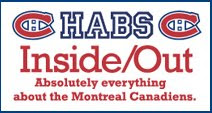





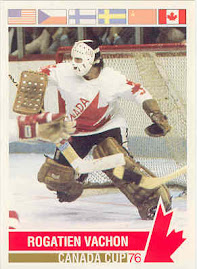
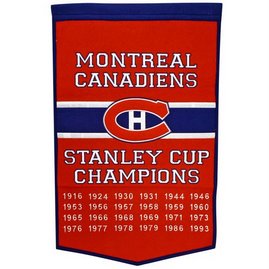







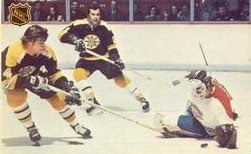



















































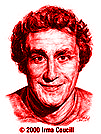



































































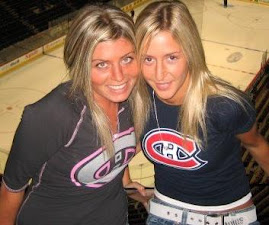
















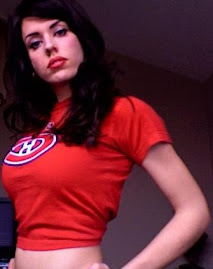

4 comments:
I'm absolutely enjoying your series on the Habs, but I'm wondering about the Habs having worn a white sweater for 1911-12. I've never heard of this before. Is there any written documentation of this sweater in the press to back this up?
I've seen quite a few editorial cartoons with mock ups for uniforms from that period and theyre not always that accurate. I also happened to notice that there is a player wearing a jersey with a diagonal sash and the letters "C H C" from the 1913-14 team photo that looks suspiciously like something the Habs might wear. I'd love to hear any more info about this. thanks
btw the link to the 1911-12 season doesnt work. Looks like the http part was repeated.
http://http//wwwrealitycheckeyesontheprize.blogspot.com/2008/08/1912-13-newsy-returns.html
arkival - Thanks for your interest in the series, and I am pleased that you are enjoying it.
The only white sweater that I know of as having been worn in 1911-12, are these pictured in the drawing and cartoon with the diagonal lines.
The plain white's in picture from this era are often practice sweaters, far as I can tell.
The reason for the alternate sweater of 1911-12 season, was of course, it's similarity to those of the Seantors. I have read, however from a not so confirmable source, that upon one occasion of a game against Ottawa, that the Canadiens perhaps employed a plain white to finish one particular game, after the confusion was made apparent.
Furthermore, from 1915 until 1935, there is no concrete record of the Canadiens having an official white sweater. However, in games against the Red Wings, Detroit often sported a white version similar to what is worn today. They did not have a red sweater during their Cougars and Falcons incarnations.
I did however read about one occasion where Detroit showed up in Montreal during this era, and forgot to bring along the white version. The Canadiens were asked to don the jersey of a local team wearing white to suit the game. Again, I cannot confirm such as being fact.
As I have noticed so far in queries about this series, there seems to be quite a fascination with the look of the club in the early years. Going forward, I will attempt to give as much detail about the sweater as I can possibly learn as being true.
In the end, it really is the photos that tell the most accurate tale.
The player in the 1913-14 team photo with the CHC sweater with a diagonal stripe is from the Chicoutimi Hockey Club, the same team Vezina played for in 1909-10 when he was noticed by the Canadiens.
I am trying to confirm the details of the Canadiens white sweaters of 1911-12 with the diagonal lines, as pictured above and on the Canadiens own history website, but am having no luck in finding any actual photographs to confirm it.
The only photo I've found is of Hector Dallaire, who is pictured in a white sweater with red, white and blue stripes around the neck and arms, but no diagonal stripes. You are not able to see the cuffs, as he is wearing his hockey gloves at the time.
My current article on the Canadiens white sweaters, with pictures of the Dallaire sweater, can be found here.
http://thirdstringgoalie.blogspot.com/2014/01/setting-record-straight-1911-12.html
You'll have to copy and past it, as links are not allowed.
Post a Comment